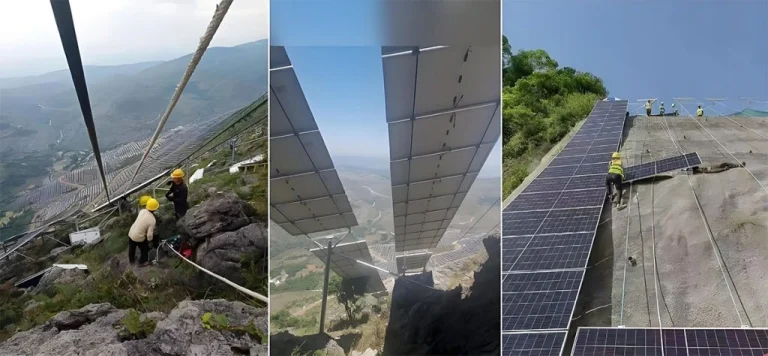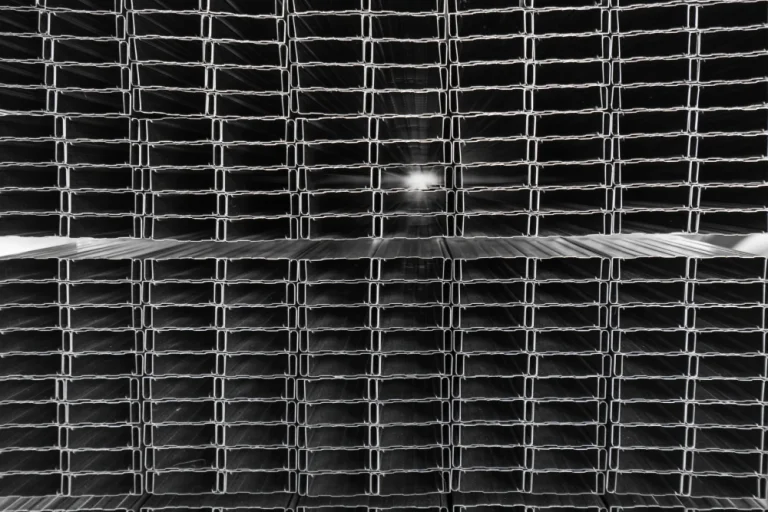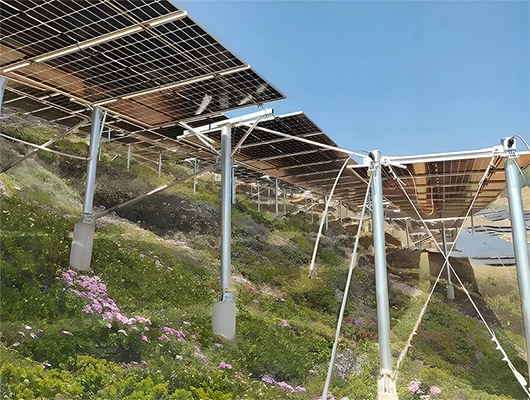What Makes a One Axis Solar Tracker Different from Fixed Solar Panels?
The Mechanism Behind a One Axis Solar Tracker
A one axis solar tracker is designed to follow the sun’s trajectory across the sky, typically from east to west. This setup enables the solar panels on the tracker to maintain an optimal angle to capture sunlight throughout the day. Unlike fixed solar panels, which sit still at one tilt and angle, these trackers use parts like slewing drives or smart control systems to shift their position. It uses sturdy materials like HDG and Al-Zn-Mg steel for toughness and efficiency. Its tracking angles swing from ±40° to ±60°. These features enable the tracker to adjust smoothly to the sun’s movement, maximizing energy capture throughout the day.
![]()
Comparing Energy Output: Fixed Panels vs. One Axis Solar Trackers
Fixed solar panels are stuck in one spot, so they only grab sunlight well when the sun lines up with their angle. This limits their output to certain times of the day. On the flip side, one axis solar trackers keep moving to face the sun head-on for longer stretches. This mechanism significantly increases energy efficiency. Studies indicate that these trackers can increase power output by 25-35% compared to fixed systems under equivalent conditions. They cut down on shading issues and soak up more sunlight during peak hours. This makes them an optimal choice for projects aiming to maximize energy output.
How Does a One Axis Solar Tracker Maximize Solar Output?
Tracking the Sun’s Movement for Optimal Positioning
The main job of a one axis solar tracker is to follow the sun’s trail, keeping panels at just the right angle to catch its rays. By shifting its position all day, it cuts down on light bouncing off and pulls in more solar energy. The CZT One Axis Tracker uses advanced slewing drives to make precise tweaks based on where the sun is right then. This flexibility keeps it working strong even when seasons change the sun’s path.
Reducing Energy Loss During Peak Hours
Peak sunlight hours are prime time for solar power systems to shine. Fixed panels often miss out here because they can’t move. Their static angle means they lose some juice when the sun’s not lined up just right. But one axis trackers pivot to stay square with the sun during these key hours. This cuts losses from bad angles or shadows. Plus, they hold up well under different weather, making them a dependable choice for steady energy output.
Why is a One Axis Solar Tracker a Cost-Effective Solution?
Balancing Installation Costs and Long-Term Savings
Sure, one axis solar trackers cost more upfront than fixed panels because of their moving parts and fancy setup. But that extra expense pays off over time with their bigger energy output. They let you get by with fewer panels or less reliance on outside power, which saves cash in the long run. Modern manufacturing also uses tough materials that don’t need much upkeep, keeping costs down even more.
![]()
Enhancing Return on Investment with Increased Efficiency
The additional energy output from one axis trackers results in significant cost savings over time. Systems like the CZT One Axis Tracker come with a 15-year warranty and are made from strong stuff like HDG steel and Al-Zn-Mg steel. These keep the system running smoothly for years. That durability and high output make them a smart buy for homes or businesses. Over time, you get better returns thanks to lower running costs and more power produced.
What Can CZT Offer in the Field of One Axis Solar Trackers?
An Overview of CZT’s Expertise in Solar Technology
CZT is a big name in the solar world, offering all sorts of mounting solutions for solar setups. Started in 2013 and based in , northern China’s biggest port city, the company focuses on researching, building, and selling photovoltaic supports, plus managing projects. Their massive 28,000-square-meter plant churns out 10GW of solar brackets yearly. This makes them a go-to for big ground power stations, industrial parks, and public projects. Their global service team crafts custom solutions to fit all kinds of customer needs.
CZT’s lineup covers fixed PV brackets, tracking systems, solar carports, and flexible mounts. They stick to strict quality checks and hold certifications that show their knack for innovation and dependability. Their one axis solar trackers stand out for boosting energy output by moving panels to follow the sun’s path.
![]()
Features of CZT‘s One Axis Solar Trackers
Advanced Tracking Precision for Maximum Efficiency
One axis solar trackers are all about grabbing as much sunlight as possible by shifting along one path. The CZT One Axis Tracker uses top-notch slewing drives to make spot-on adjustments based on the sun’s position. This keeps panels at the perfect angle all day. By cutting down on light loss and soaking up more rays, these trackers crank out way more energy than fixed setups.
The system’s tracking angles go from ±40° to ±60°, so it can roll with changes in the sun’s path through the seasons. This adaptability ensures consistent performance across various environmental conditions. That kind of precision bumps up efficiency and trims energy waste during peak sunlight hours.
Durable Materials Designed for Long-Term Performance
Durability is a big deal for one axis solar trackers. CZT uses tough materials like HDG steel and Al-Zn-Mg steel in their systems. These stand up to rust and wear, holding strong even in rough weather. That means the trackers last a long time with little fuss.
These high-quality materials also mean less maintenance and a longer lifespan. CZT backs their one axis trackers with a 15-year warranty, showing they trust their gear to keep performing. This long guarantee gives customers confidence and proves CZT’s focus on quality.
Easy Installation and Low Maintenance Requirements
CZT’s one axis solar trackers are designed for easy installation with minimal labor required. Their design cuts down on assembly time and labor costs. Pre-built parts make on-site setup quick, which is great for both big commercial projects and smaller home setups.
Maintenance is straightforward and does not require extensive effort. A quick check of moving parts like slewing drives now and then is usually enough to keep things running smooth. This low-upkeep design saves money over time while keeping performance high.
FAQ
Q: How does a one axis solar tracker work?
A: A one axis solar tracker follows the sun’s path from east to west, tilting panels to stay lined up with sunlight all day.
Q: Is it worth investing in a one axis solar tracker compared to fixed panels?
A: Yep, they cost more upfront, but one axis trackers boost energy output by 25-35%. That means big savings and better returns over time.
Q: Can one axis trackers operate efficiently in cloudy conditions?
A: Yes, modern trackers are engineered to adjust efficiently under cloudy conditions, ensuring optimal performance even during periods of reduced sunlight.
Q: What maintenance is required for one axis solar trackers?
A: Just a quick check of parts like slewing drives and a wipe-down of panels now and then keeps them running great.
Q: Are one axis solar trackers suitable for all types of terrain?
A: Yes, the trackers are designed to operate efficiently across a wide range of terrain types, including both flat and slightly uneven ground.









